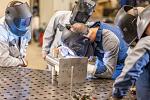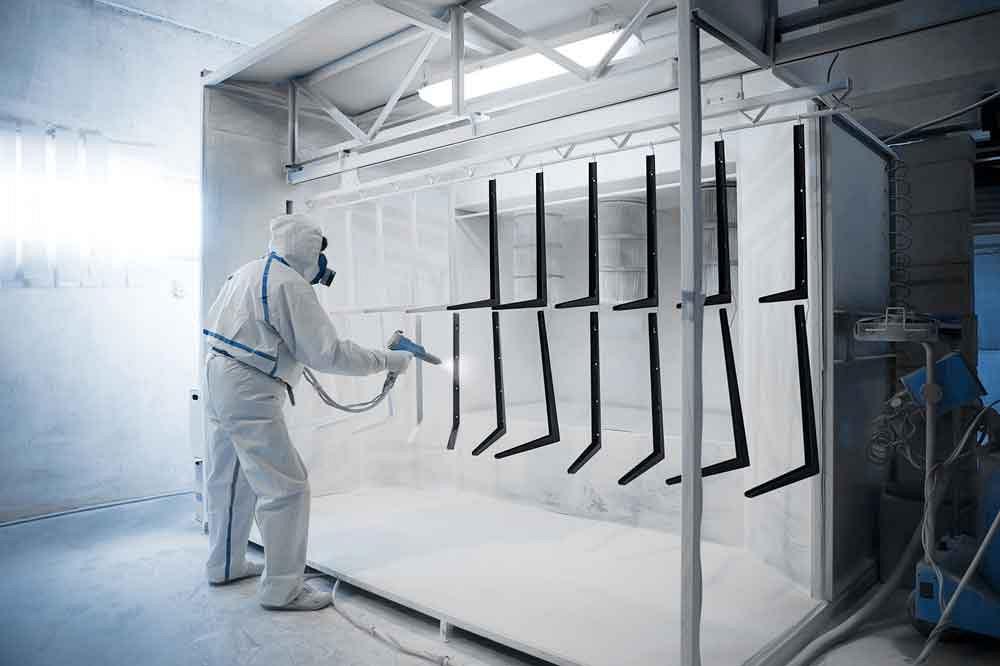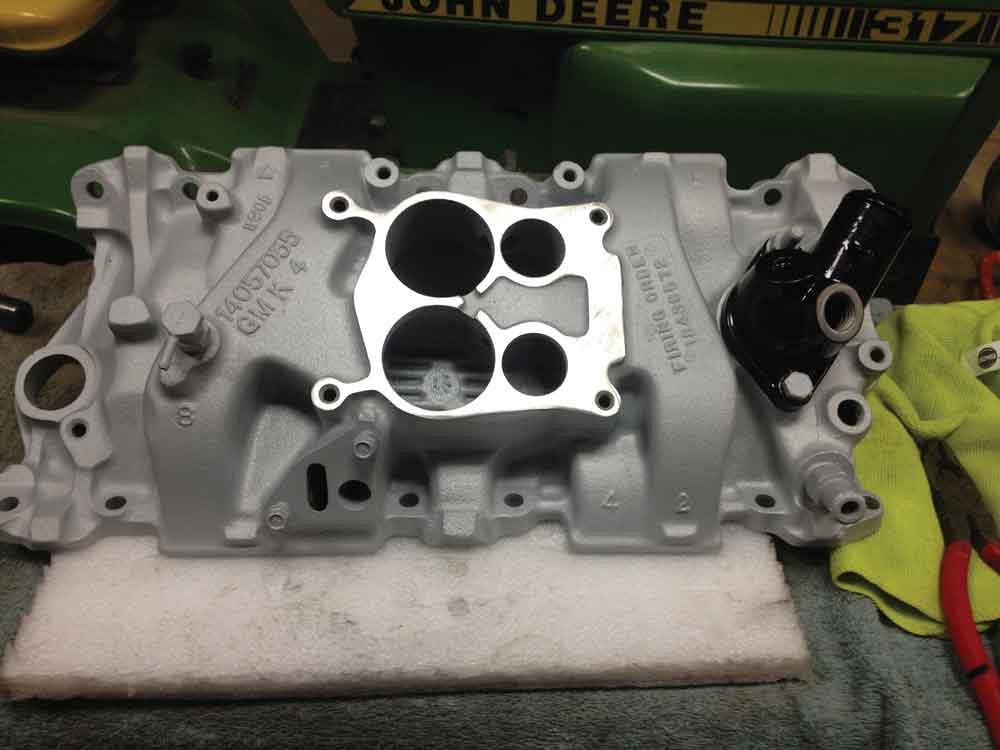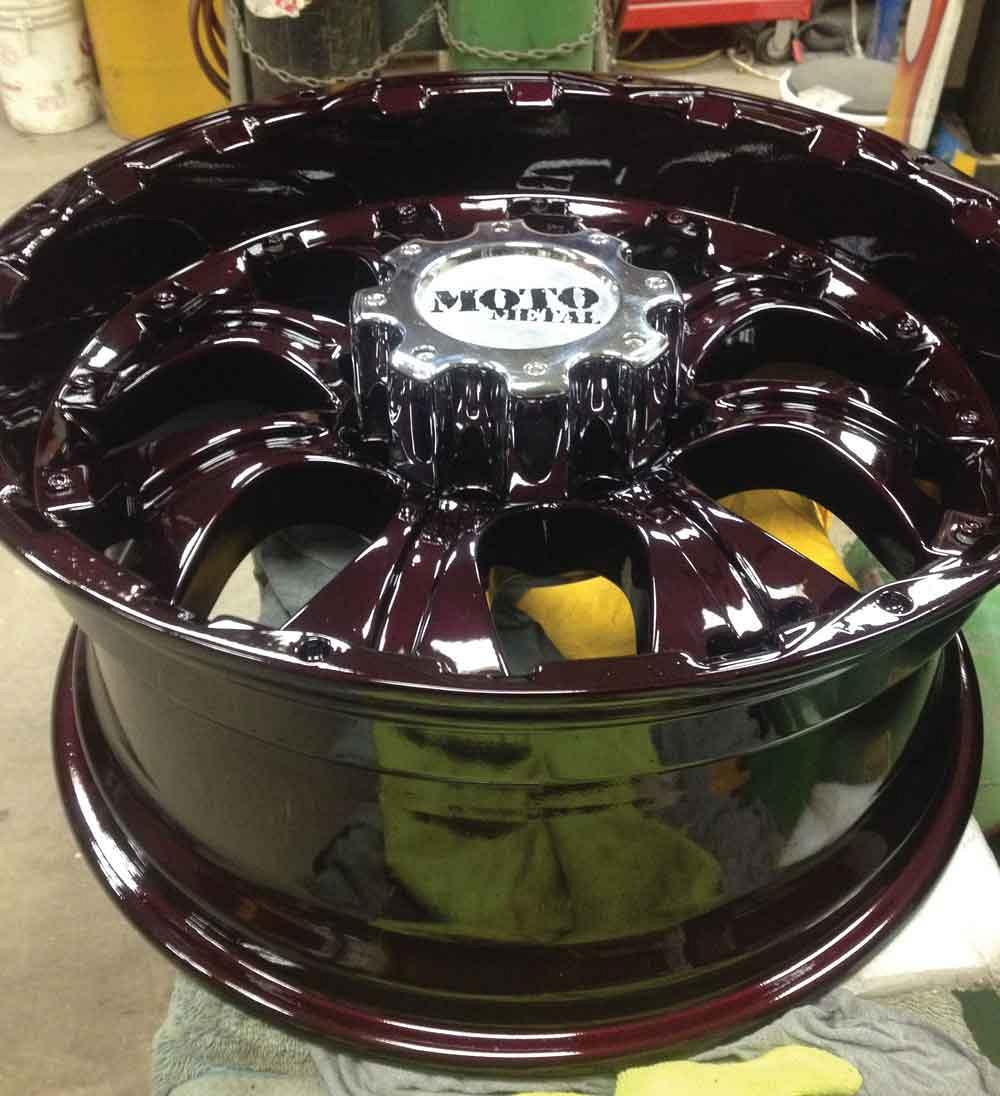- FMA
- The Fabricator
- FABTECH
- Canadian Metalworking
Powder coating 101
The process keeps metal dry, is easy to apply, and gives a very durable finish
- By Nestor Gula
- September 28, 2016
- Article
- Metal Finishing
Powder coating parts is an option to consider if the parts will be exposed to the elements for a prolonged period of time. It is a better option than painting, because of the durability of the coating.
“Paint is more porous and powder is not, so it will not let water or anything get into it. No water or salts will get through the powder to the steel to start the rust. That is the biggest thing about powder coatings and why people like to use them,” said Ron Ducharme, the owner of Maidstone Coatings, Maidstone, Ont. “Powder coating is definitely not Kevlar®. It can be scratched, it can be dinged. It can also be polished back to its original finish.”
The powder coating process was developed in the late 1940s and grew in popularity in the ensuing decades. In a nutshell, a powder-coated surface is a hard, plastic-like coating on a metallic surface. The coating itself is made of a polymer that is mixed with pigments. Theses polymers and pigments are heated and then cooled, and then crushed to make the necessary powders that are then sprayed onto the part. Companies that make these powders have literally thousands of colours available and some even offer colour matching.
Cleaning
The steps to powder coating are fairly straightforward. You first need to clean the part to the base metal, removing all paint, dust, and oils. This can be done by media blasting, grinding, sanding, or with a chemical process. Soaking the part in acetone or a similar cleaner to remove residual oils is also recommended. Any imperfections or errors in the cleaning process will result in a poorly powder-coated part, and rejections or warranty claims down the line.
“Cleaning is probably the most important part of the process. You can lay powder on anything you want on the substrate after it has been sanded to the bare metal and/or media blasted. But the steps of cleaning it are critical. Make sure it is grease-free, wax-free, and fingerprint-free especially because there are a lot of oils on our skin,” said Ducharme. “I use zinc phosphate and then clean it again with a pre-prep and then powder coat. I prefer to clean the metal with water and then blow it off right away. I then heat the part up, cool it down, and then clean it with a pre-prep and then coat it with powder. Your prep is the most important part. If it is not prepped properly, you will not get long-lasting results.”
The method of cleaning will depend on the size of the parts. Small parts can be dunked in wash basins.
“If they are larger parts, you can wash them down with spray wash in a booth,” said Val Barone, the owner of Powder Coating Supply, Hamilton, Ont.
Baking the part before applying the powder, called outgassing, removes any traces of water and other liquids from the bare metal. This step is important when coating metals that are more porous and will have absorbed more oils during the manufacturing process.
Application
The powder moves from the spray gun to the part by way of electrostatic attraction. In most systems the powder in the gun has a positive charge applied to it while the part has a negative charge on it. Pulling the trigger releases the positively charged paint/powder, and this is attracted by the part and sticks to the metal.
“You can use powder coating on any metal surface,” said Ducharme. “Most people prefer to use it on, and my biggest seller is, motorcycle frames and adjacent parts. As far as parts for cars goes, anything that is metal and under the hood can be powder coated.”
It is best to spray in a booth as this way you will avoid having to clean up overspray, which can be hazardous.
“As with any coatings that you use, you always have to have a mask and use it in a well-ventilated area,” said Ducharme. “It is the dust, it is fine powder that is flying around, so you need to be in a booth to do this. You need to be clothed properly and have a respirator. The coatings can also be a fire hazard. A spark and ignition can be hazardous. Certain powders can definitely start a powder fire.”
Baking
Once the part is coated, it goes into an oven to bake at about 200 degrees C (400 degrees F) for about 15 minutes. Once cooled, the part will be very durable.
Setting up a powder coating process in your shop is not a daunting task. Depending on the size of the parts you plan to coat, it can be an inexpensive and profitable experience. If the parts you are planning to powder coat are small, you can start with a very basic kit: a gun, a power source, and a toaster oven. Any oven that can hit 200 degrees C can be used – a kitchen oven is another good way to start.
“A lot of guys will start with a small toaster oven and move their way up,” said Ducharme. “I started with a regular oven. Eventually I moved up to larger ovens to accommodate larger parts.”
Ovens are available in many sizes for your powder coating needs. If you are using a toaster oven or a commercial/kitchen oven, be aware that you should then never use it for food as this is extremely hazardous. Oven aside, you can get very basic powder coating kits, consisting of a gun, some powder, and everything you need to get going for several hundred dollars.
For a durable, coated metal surface, nothing much beats powder coating. Whereas years ago the colour selection was not great, the situation has changed.
“There are enough colours,” said Ducharme. “Eastwood sells a certain amount of colours and there are others as well. There are well over 7,000 colours to choose from. We can actually get close to colour matching now.”
Powders can be used in any gun, so buying from one manufacturer will not limit your choice in colours and type of coating.
Nestor Gula is a Toronto-based freelance writer. He can be reached at nestor.gula@yahoo.ca.
Maidstone Coatings, 519-791-8184, www.maidstonecoatings.com
Powder Coating Supply, 905-389-2141, www.powdercoatingsupply.com
About the Author
subscribe now


Keep up to date with the latest news, events, and technology for all things metal from our pair of monthly magazines written specifically for Canadian manufacturers!
Start Your Free Subscription- Trending Articles
Class is in session for college connections

BlueForge Alliance partners with Nuts, Bolts & Thingamajigs to develop Submarine Manufacturing Camps

Engine-driven welding machines include integrated air compressors

Orbital tube welding webinar to be held April 23

Portable system becomes hot tech in heat treatment

- Industry Events
ZEISS Quality Innovation Days 2024
- April 15 - 19, 2024
Tube 2024
- April 15 - 19, 2024
- Düsseldorf, Germany
CTMA Economic Uncertainty: Helping You Navigate Windsor Seminar
- April 30, 2024
- Windsor, ON Canada
MME Winnipeg
- April 30, 2024
- Winnipeg, ON Canada
CTMA Economic Uncertainty: Helping You Navigate Kitchener Seminar
- May 2, 2024
- Kitchener, ON Canada



















